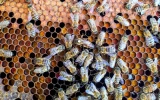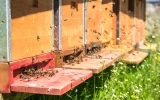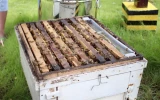How To Start Your First Bee Colony (5 Easy Steps)
Starting your first bee colony can be an exciting and rewarding experience. You will have the chance to observe the behavior of the fascinating bee creatures as well as help the environment by providing a home for bees. In this article, we'll provide an overview of the five basic steps required to get your bee colony off the ground.
To start your first bee colony, first, select a suitable location for your colony. Second, purchase the necessary beekeeping supplies. Third, get your bees. Fourth, install your bees in the hive. Finally, monitor the health of your bee colony regularly.
By following these five easy steps, you'll be well on your way to becoming a beekeeping expert. Now, let's discover the costs and equipment you'll need, as well as the process of getting your bees and setting up their hive.
Summary
- Bees are fascinating creatures that play a vital role in the world’s ecosystems, and they can be incredibly rewarding to keep.
- You can select a suitable location for your bee colony that will provide a safe and healthy environment for your bees to thrive.
- Beehives, bee frames, a smoker, feeders, a bee brush, and a honey extractor are the major supplies you need to ensure that you have everything you need to get started.
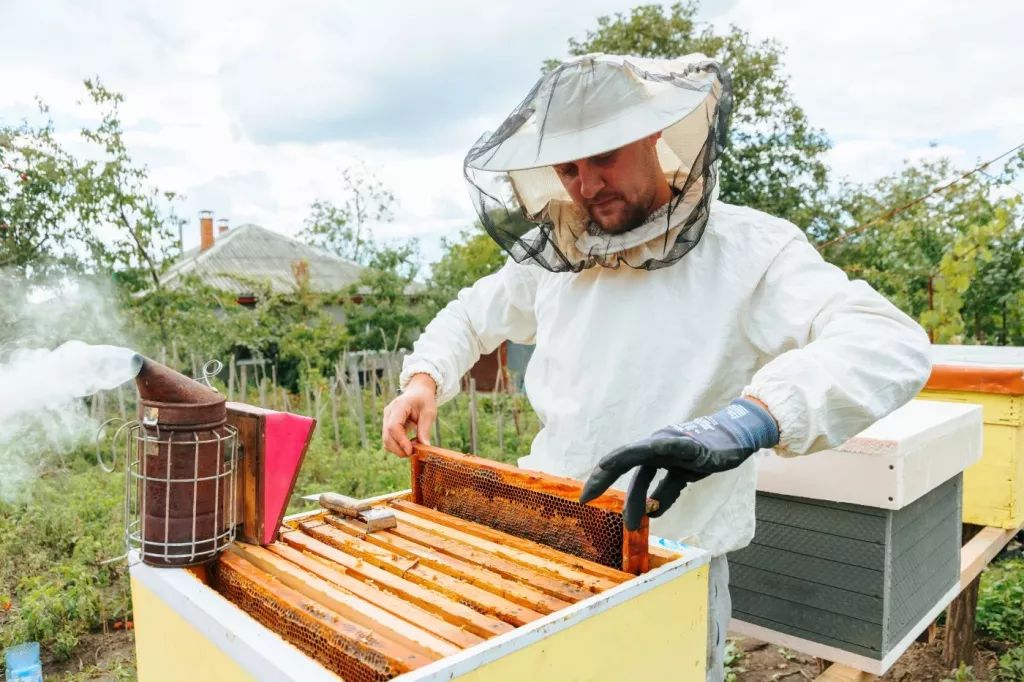
On this page:
5 Steps To Start Your First Bee Colony
Starting your first bee colony will be a rewarding experience if you follow these five easy steps that will ensure that your bee colony has the best chance of success.
1) Select a suitable location for your bee colony
You need to find a place that will provide adequate space and protection for your bees. When selecting a suitable location for your bee colony, there are several factors to consider.
- A location that is sheltered from strong winds and other extreme weather conditions is ideal. It should also be away from any sources of pollution, such as highways and industrial sites. Additionally, the area should have plenty of flowering plants and trees that will provide the bees with a reliable source of nectar and pollen.
- Consider the temperature of the area. Bees prefer temperatures between 60 and 80°F and will not survive in areas that are too cold or too hot. Therefore, you should select a location that has consistent temperatures throughout the year.
- Ensure that the environment is safe for your bees. Make sure there are no predators or other pests that can harm the colony. Additionally, it is important to choose a place that is not near any bee-repellent plants, such as mint or eucalyptus.
2) Purchase the necessary beekeeping supplies
To become a beekeeper, you will need to purchase a few essential supplies to get started.
- One of the first things you will need is a beehive. This is the structure that houses the bees and provides them with a safe place to live. You can purchase beehives in a variety of sizes, depending on the number of bees you plan on keeping.
- You will also need to purchase bee frames, which are frames that hold the wax foundation that the bees use to build their honeycomb.
- You will also need a bee smoker, which is used to calm the bees while you inspect the hive. You may need to purchase a bee suit or protective clothing to wear while you inspect the hive.
- Other supplies you may need to purchase include feeders to provide the bees with food and water and a bee brush to help you gently remove the bees from the frames.
- You may also want to purchase a honey extractor to help you harvest the honey from the hive.
Overall, there is a wide range of supplies that you will need to purchase to start beekeeping.
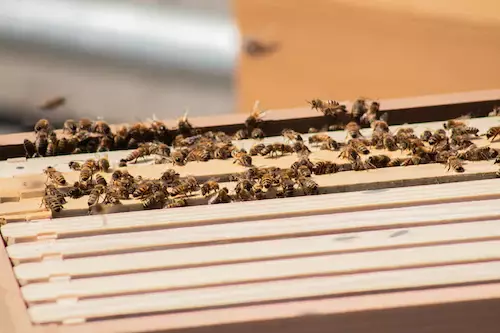
3) Purchase or catch your bees to start your desired bee colony
If you are looking to purchase bees, then you have several options.
- You can buy a nucleus colony, which includes a queen, four or five frames of brood, and several hundred bees. These typically cost anywhere from $150 to $200.
- You can also purchase a two-pound package of bees, which includes a queen, two to three pounds of bees, and a can of sugar syrup. These packages typically cost around $95 each.
- You can purchase a pre-made hive, which includes a queen, frames, and bees. These typically cost around $250–300.
If you are looking to catch your bees, then you need to be prepared to do some research.
- You will need to identify the location of bee swarms or colonies and then monitor them to ensure they are healthy.
- You can then use a bee vacuum or net to trap the bees, or you can build a bait hive to lure them in.
- Depending on the size of the swarm, you may need to purchase additional supplies such as hive boxes, frames, and feeders. The cost of the supplies and equipment can vary, but you should expect to spend at least $50 on necessary items.
4) Install your bees in the hive in order to let them settle
As a beginner beekeeper, installing your bees into the hive can be a nerve-wracking experience. Fortunately, it is a relatively simple process. You will need to make sure that the hive is ready for the bees.
- Check that all the frames are firmly in place and that there are no gaps or cracks in the hive.
- Equip yourself with protective gear to make sure you stay safe. This will usually include a beekeeping suit, gloves, and a veil.
- Once you are ready, you can start to introduce the bees to the hive.
- Place the package of bees near the entrance to the hive and remove the can of sugar syrup.
- Peel away the can and the cork, and shake the bees out into the hive.
- The bees should quickly begin to explore the new hive and find their way in.
- Make sure to keep an eye on them to make sure they are entering the hive.
- Once all the bees have entered the hive, you can close up the entrance and leave them to settle in.
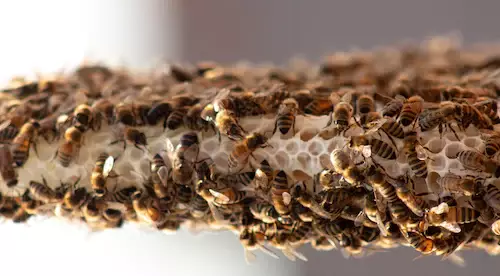
5) Monitor the health of your bee colony regularly
Check on them regularly to make sure they are healthy and thriving in their new home. As a beginner beekeeper, one of the most important aspects of successfully keeping bees is monitoring the health of your colony regularly. This is done by inspecting the hive and observing the behavior of the bees.
Checking your beehives regularly will help you identify any potential problems or issues and address them quickly. When checking the health of your colony, you should be looking for:
- Signs of disease or pests, such as dead bees, mites, and wax moths.
- Evidence of honey production, such as capped and uncapped honeycombs, and the presence of drones, which are male bees.
- Evidence of swarming can be identified by the presence of queen cells. If your bee colony is swarming, it is important to take action quickly to ensure the health of your bees and prevent the colony from splitting.
You should also be checking the overall health of your bees. This can be done by observing the behavior of your bees, such as the size of their clusters and their foraging patterns. You should also check the size of your colony, which can be done by counting the number of frames in your hive.
